Main content
Top content
Top content

Cooperation project with Osnabrück Unversity Sports
Upcycling of discarded sports equipment
The basis for the semester project is a cooperation with the Osnabrück University Sports Center. Balls, mats, jerseys and boxing gloves are regularly discarded during training. In order to use these resources sustainably, the aim is to find new uses for these sports materials through upcycling. The aim is to create prototypes and research the opportunities for serial production, e.g. by social enterprises. In addition, the Center for University Sports would like ideas for trophies, medals (e.g. with textile ribbons) or badges for sports competitions. A sports project for the upcycling of sports equipment and the product development of prototypes.
Further information: Lucia Schwalenberg, lucia.schwalenberg@uni-osnabrueck.de
Photos: Lucia Schwalenberg
-------
Cooperation project with Clothmaker Museum Bramsche
The handloom collection at the Clothmaker Museum Bramsche
Handloom weaving is a central theme of the Clothmaker Museum Bramsche, to which a separate exhibition unit is to be dedicated as part of the redesign of the permanent exhibition. Until well into the 19th century, clothmakers worked on hand looms, which were replaced by weaving machines in the late 19th century. Until the 20th century, farms produced bed, table and body linen for their own use on heavy hand looms made of oak wood. While the textile industry is using ever more powerful looms, hand looms are still the main tools used in artistic and craft weaving in the tradition of the Arts and Crafts movement and Bauhaus weaving. The Clothmaker Museum has a collection of more than 20 hand looms. Most of them come from farms in the region, while some looms have been acquired from workshop liquidations. The most recent acquisition was in 2024 from the former Ter Meulen handloom weaving mill in Osnabrück. The handlooms are being restored in the museum depot on the grounds of the Hof Hasemann Foundation near Bramsche-Achmer. Numerous individual parts have to be matched. The documentation of the objects is incomplete. The aim of the project is to document the looms. The collection is to be published on the museum-digital platform and made accessible in the depot.
Further information: Lucia Schwalenberg, lucia.schwalenberg@uni-osnabrueck.de
Photos: Lucia Schwalenberg
-------

Präsentation Textiles Gestalten
Content, projects, excursions and equipmentTextile Studies at Osnabrück University integrates content from textile science, didactics and design. A screen presentation provides insights into teaching and research, projects, excursions, the equipment of the workshops with analog and digital technology, the textile makerspace St!chLab and the student clothing rental service Fairo Moda.
Weitere Informationen: Bärbel Schmidt, baerbel.schmidt@uos.de
Foto: Lucia Schwalenberg
-------
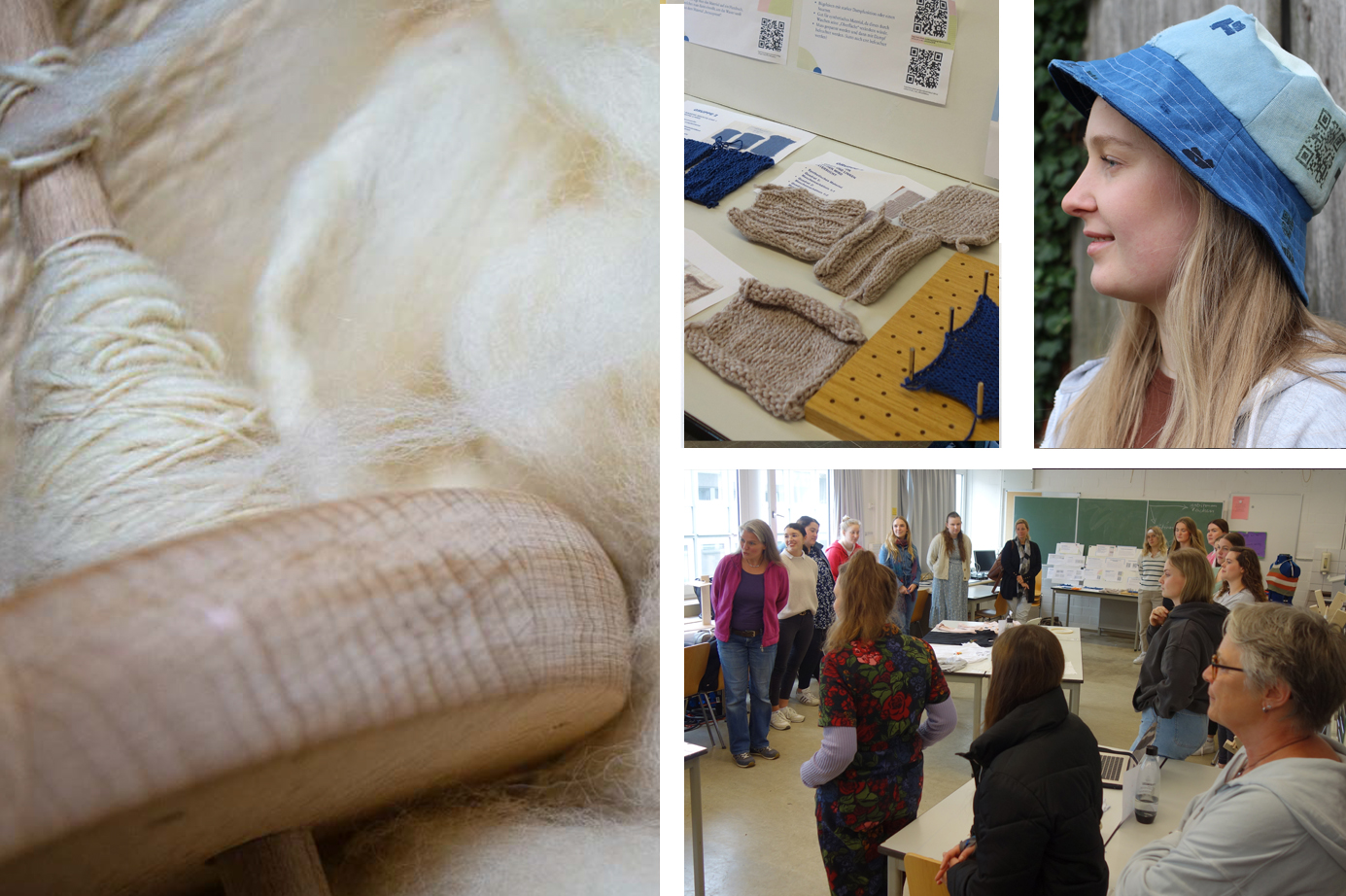
Self-study
Presentation of results as a pup-up exhibition
The Technology and Production module deals with the independent development, planning and implementation of textile technical tasks. The course content created as part of the new module regulations of Textile Studies is designed as self-study with an accompanying colloquium. Self-study refers to a form of learning in which learners acquire knowledge alone or with the help of learning materials such as books or other sources. As part of the redesign of study programs, self-study is becoming increasingly important. This is due to the fact of a complex world in which independent understanding and action are prerequisites for overcoming global crises. Last semester's students presented their results in the form of a pop-up exhibition in Textile Studies. For the teacher Alexandra Wilker, the students involved were successful in engaging in an open-ended process, setting priorities based on their interests and addressing their own gaps in choosing the task. As part of the self-study, the students discussed textile techniques such as spinning, dyeing, knitting, crocheting, embroidery, weaving, dyeing, sewing, upcycling, tufting and felting. Both digital and analog technologies were used.
Further informations: Alexandra Wilkers, alexandra.wilkers@uni-osnabrueck.de
Photos: Theresa Veerkamp, Annabelle Keuter, Lucia Schwalenberg.
-------
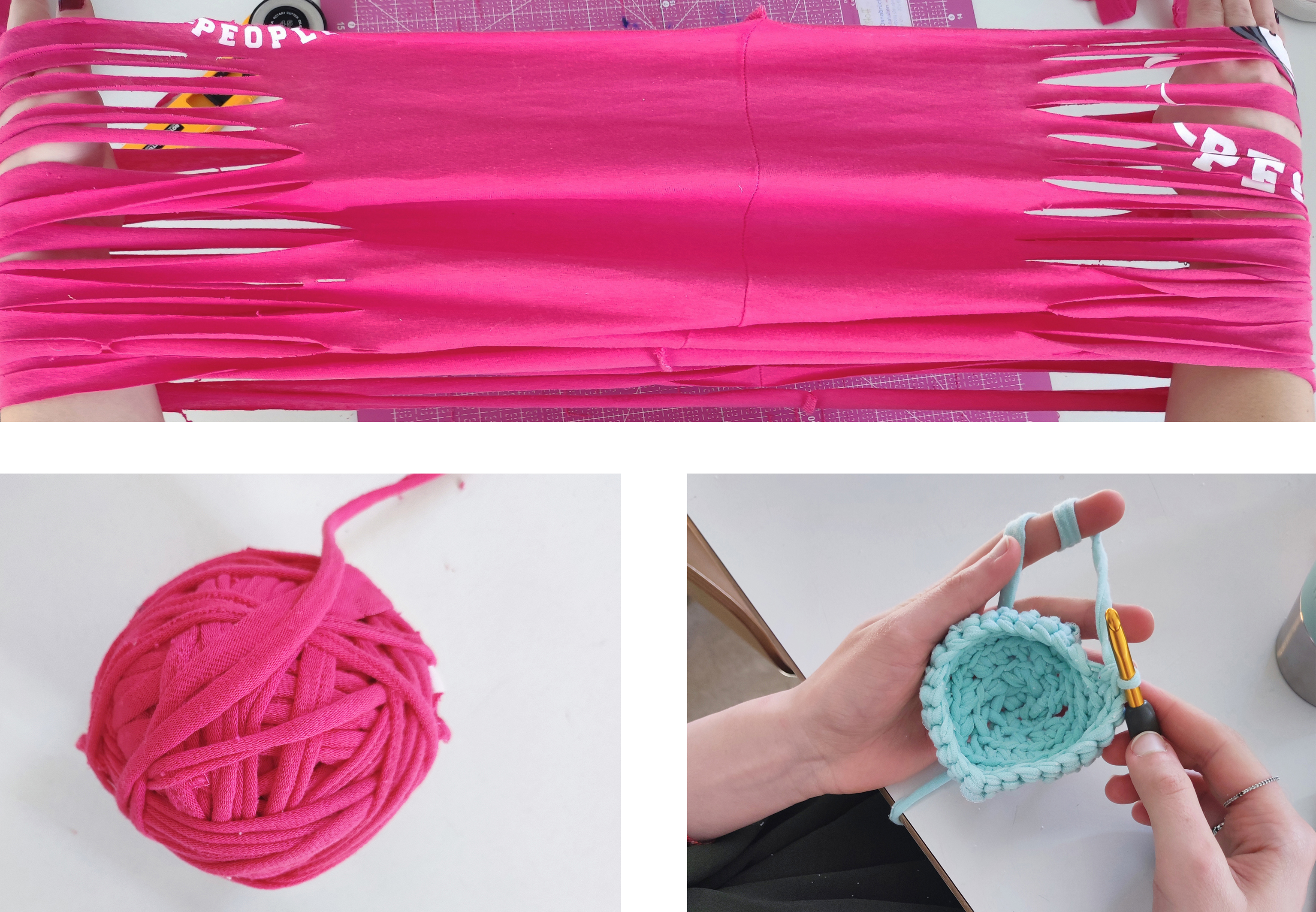
Cooperation workshop with the Fachverband ... textil... e. V.
From OLD to NEW
On November 17th, the debate “turning OLD into NEW” was the focus of a workshop at Textile Studies. In cooperation with the association ... textile... e. V. Science - Research - Education, students learned through craft processes how an old T-shirt is turned into yarn. Under the guidance of former teacher Ruth Fiedler, “new” everyday items were then crocheted from the yarn. The didactic-methodological workshop gave the teacher training students an insight into their future work as teachers. Textiles are becoming a medium and provide practical and resource-saving suggestions for the later on own teaching.
Futher informations: Swantje Möhlmann, swmoehlm@uni-osnabrueck.de
Photos: Swantje Möhlmann
-----
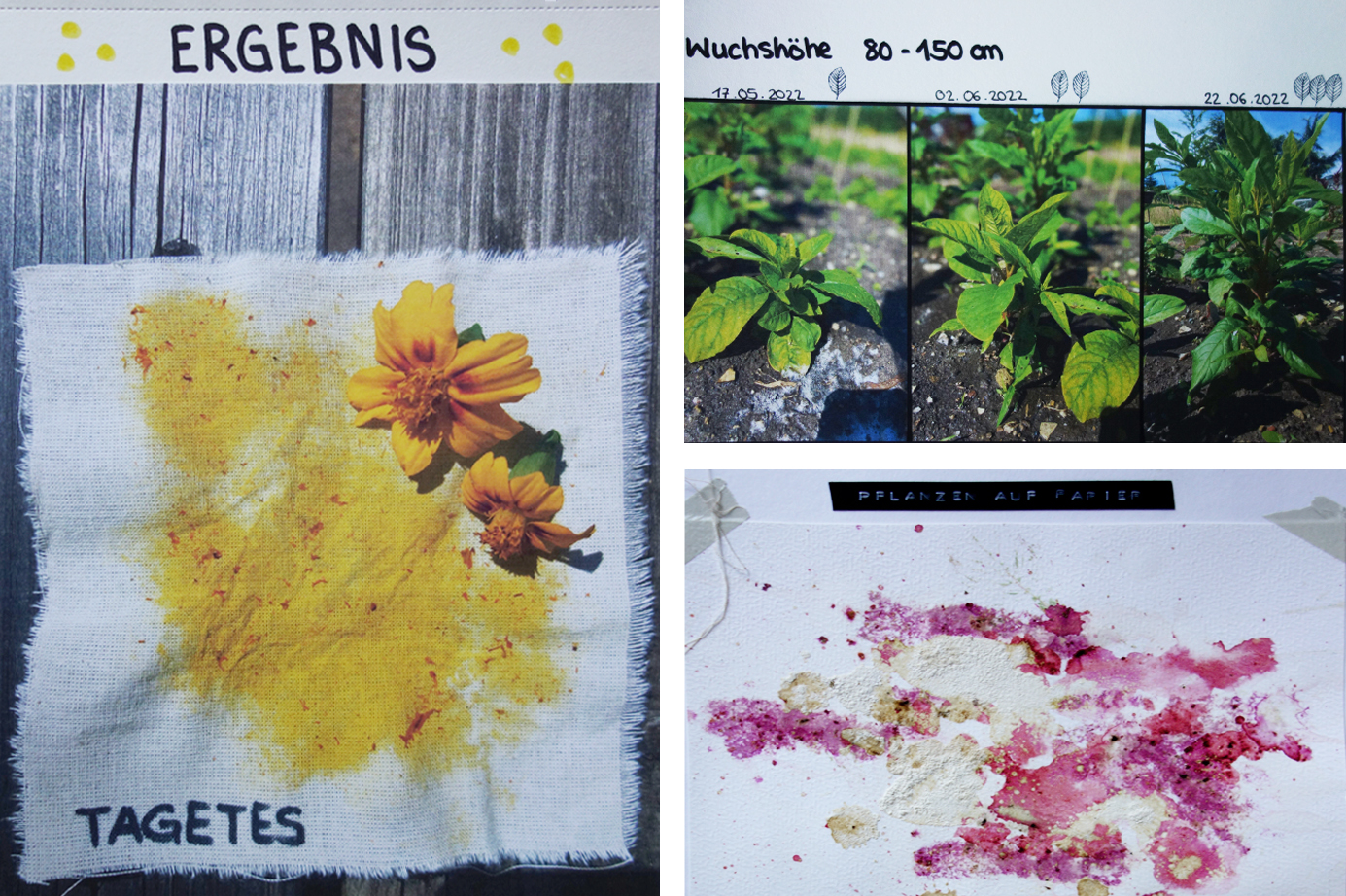
Cooperation project with the Botanical Garden
Botanical colors
Imparting expert knowledge about the dyeing of textiles was the goal of the seminar "Botanische Farben"(Botanical Colors) of Textile Studies in cooperation with the Botanical Garden of the University of Osnabrück. The students created their own bed of dye plants in an open area of the Botanical Garden. They were accompanied by staff members of the Botanical Garden and teachers of textile studies.
Special thanks go to Prof. Dr. Nico Dissmeyer, Yvonne Bouillon, Claudia Grabowski-Hüsing and Wilhelm Feldkötter at the Botanical Garden.
The seminar schedule was based on the conditions of plant growth, flowering phases, watering and weeding schedule, and weather.
"From the seminar reflections of the participants: "A special focus of textile studies at the University of Osnabrück is the examination of sustainability in connection with textiles. The focus is on researching alternative methods to the problematic, industrial production of textiles and the critical examination of the consumption of clothing. 20% of industrial water pollution can be attributed to the dyeing and treatment of textiles. In addition, there are the poor working conditions of textile workers in dyeing factories, who are exposed to toxins on a daily basis. (...) The "Botanische Farben" (Botanical Colors) seminar was a great enrichment for my entire studies." Julia Thiessen
"Particularly exciting was the meeting in the Botanical Garden, where we conducted dyeing experiments. Together, the flowers of the various dye plants were harvested and then used for dyeing. Dyeing was done on both fabric and paper. We dyed with a hammer, with our hands and with powder. In addition, soda, soda ash and lemon were used. I was enthusiastic about the execution, the methods as well as the contents of the seminar. It was especially impressive for me to learn about the versatility of dye plants and to be able to experiment with them." Catherine Hildebrandt.
Lecturer: Prof.in Dr.in Bärbel Schmidt
Student assistant: Marie Fink
photos: Julia Thiessen und Catherine Hildebrandt
-----
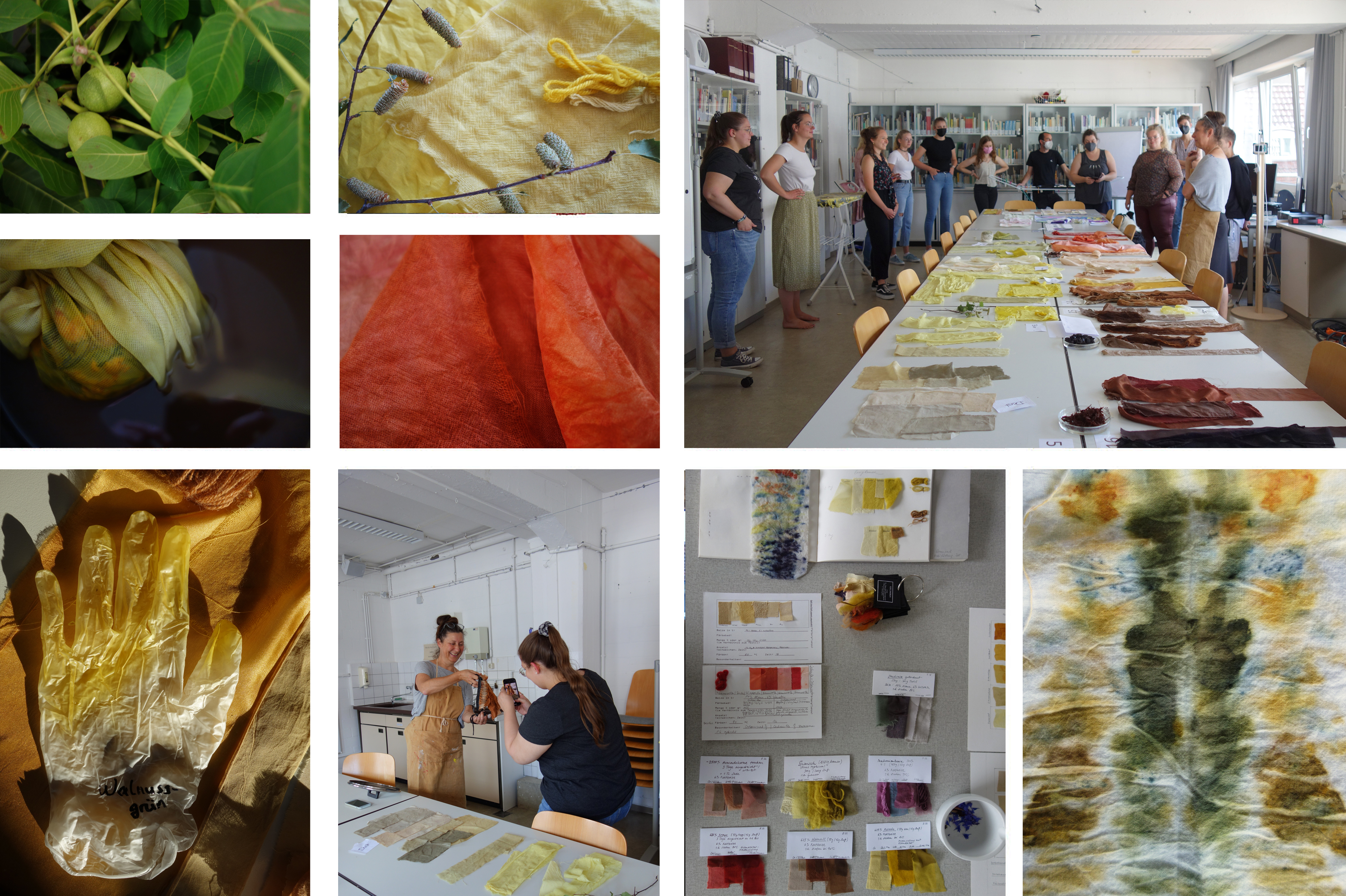
Workshop plant dyeing with Anne Hederer
From alpha for avocado to omega for onion skin
"Die Farben der Natur"(The colors of nature) was the title of a workshop on plant dyeing with Anne Hederer, textile designer and workshop leader at the Weißensee School of Art in Berlin. In four intensive days, students of textile design at the University of Osnabrück experimented with plants such as walnut, mallow, coneflower or birch in different dyeing processes.
First of all, plants had to be harvested from the specially created dyeing plant bed in the Botanical Garden of the University of Osnabrück. The dyeing plant bed was the result of a fruitful intra-university cooperation with the Department of Biology. Many thanks go to Prof. Dr. Nico Dissmeyer as deputy director of the Botanical Garden and to Yvonne Bouillon as the technical director, who made it possible for the textile design to have its own bed. The dyeing plant bed was sown, nurtured and cared for by textile students from spring to summer.
Anne Hederer expanded the harvest from the botanical garden for the workshop with a rich treasure chest full of plant dyes, from which the students drew for the experiments and test series. This resulted in deep reds from madder, delicate nudes from avocado, bright yellows from coneflower or birch, warm browns from walnut and delicate tones from tagetes. Even black, the most difficult of all colorings, succeeded in the experiment.
Anne Hederer systematically introduced the students to the basics of cold and warm dyeing, bundle dying and shibori techniques with fascinating results. The series of experiments had to be recorded in dyeing diaries and measurement series.
The course was complemented by a parallel workshop on Makerculture with Lucia Schwalenberg, so that students could simultaneously dye yarns for their weaving experiments in the dyeing course.
A workshop for which the students enthusiastically wished for a continuation: Many thanks to Anne Hederer for her infectious enthusiasm.
Lecturer: Anne Hederer
Photos: Lucia Schwalenberg
-----
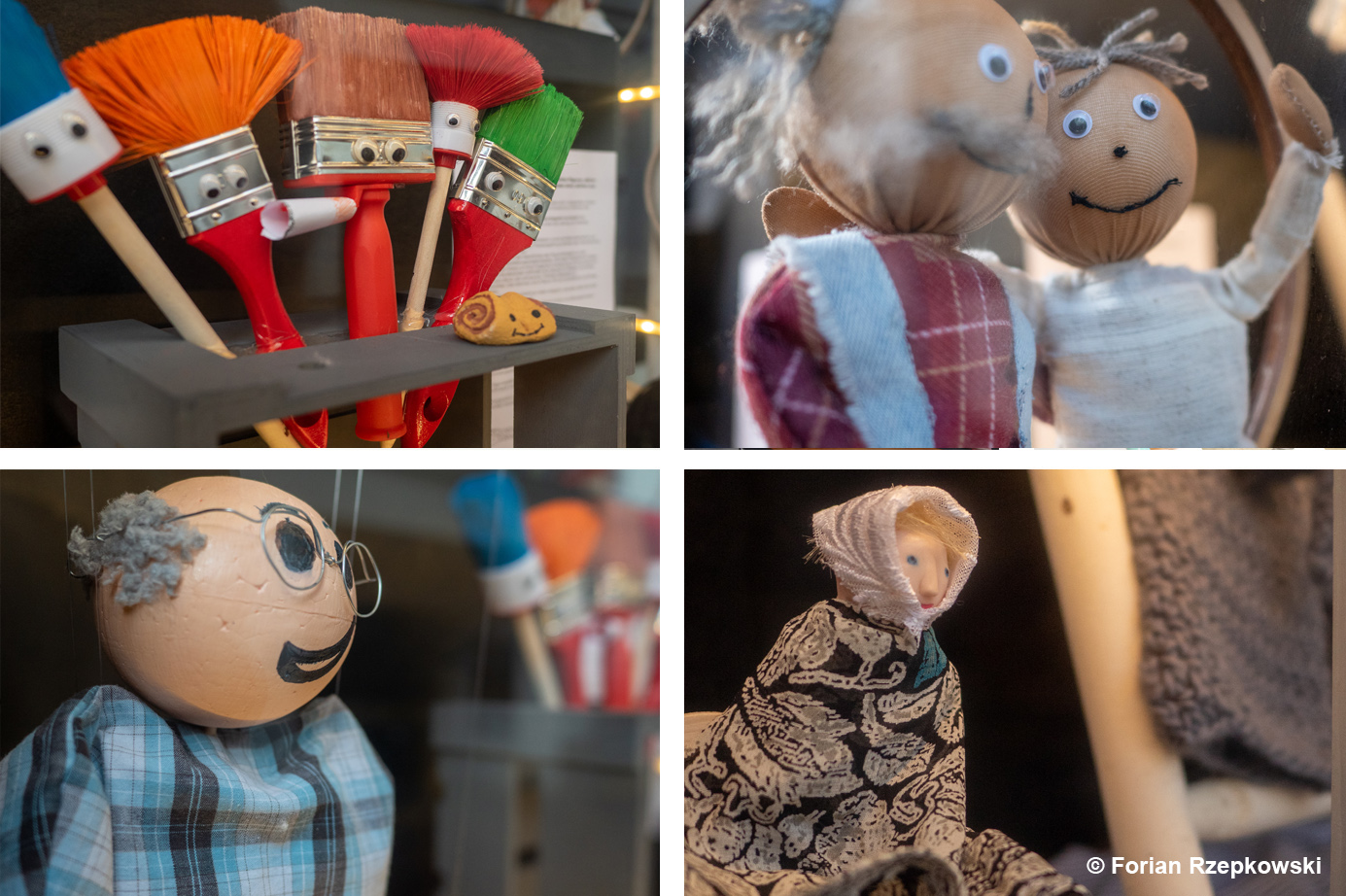
Puppet theater – What does Punch wear nowadays?
Let’s tell a story: puppets created during online teaching are now allowed to dance – in the booth of the Figurentheater Osnabrück
Delving into another world and actively co-creating it. This was what 15 students from Osnabrück University were able to do during the course “PUPPET THEATER – What does Punch wear nowadays?” offered by Textile Studies under the direction of Mareike Alexander.
The seminar began with a theoretical introduction to the basics of puppet theater and the special features and challenges of this theatrical genre. Besides exploring the history of puppet theater, the seminar also addressed the possibilities of visualization offered by this theater form and its implementation in school classes. After all, the students are doing their master’s, and will soon be teaching Textile Studies in school. The seminar created opportunities for artistic and freestyle work.
In theory, many things seem possible, but what does the world of puppet theater around us really look like? The seminar was held completely online in the form of block seminars. Florian Rzepkowski, Director of the Figurentheater Osnabrück, opened the curtain digitally by taking part in one of the online sessions as an expert, answering the students’ questions.
Text: Mareike Alexander
Photos: Florian Rzepkowski
-------
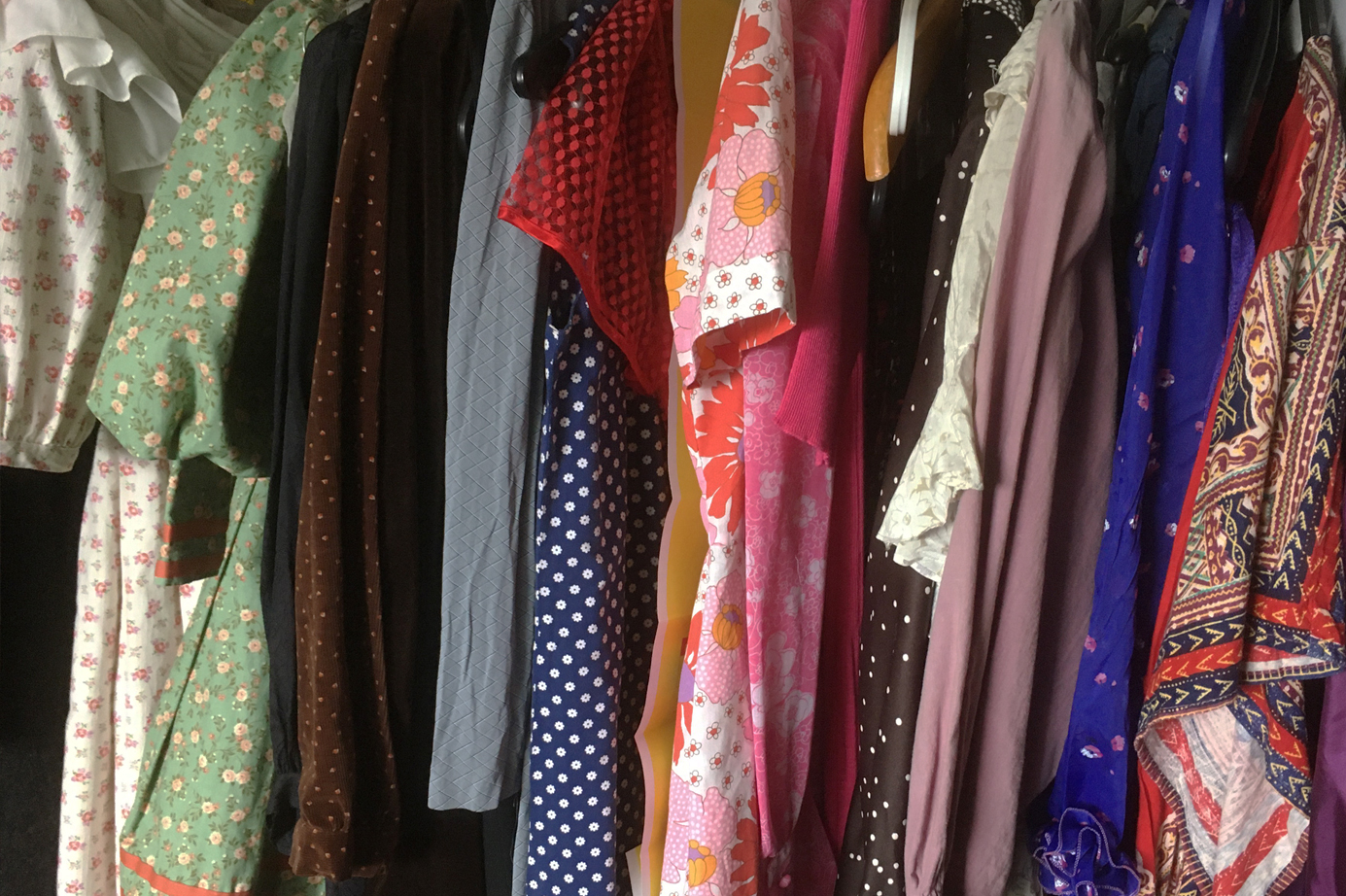
Online teaching: student feedback
Feedback on two online seminars held by Professor Dr. Bärbel Schmidt
1. Materials and Methods II
In Professor Dr. Bärbel Schmidt’s seminar on “Materials and Methods II – Fashion Stories”, students focused on past, present and future fashions. The seminar also involved addressing several theories of fashion.
Excerpts from the reflections of seminar participants:
“12 weeks full of new impressions – 12 weeks full of various classes – 12 weeks full of educationally valuable teaching methods and 12 weeks full of new insights. Each and every one of us has proven just how much you can get out of an online seminar!” Friederique
“I find it a challenge to write a general reflection after the seminar, being overwhelmed by the wealth of valuable information. StudIP’s technical options meant that we were able to hold this seminar in such a lively way that, at times, we felt as though we were closer to each other than just seeing each other over the internet. The students’ varied approach to the seminar meant that the units were very creative and lively, and I really enjoyed being surprised by my fellow students every week! It was also good practice to try out things with future lesson planning in mind, and to get feedback on how the seminar had been planned in terms of didactics. Also, with a view to the future and in exceptional situations like this one, it was exciting to learn about online teaching options. I now feel more confident in applying the technology, and can easily imagine also using it at school in an increasingly digital age.” Sophie
2. Seminar on Historic Textiles as Sources of Memory
“Despite being held online, the seminar was a valuable experience because we had the opportunity to devote ourselves creatively and independently to a new method, in our own time and in exchange with the seminar participants.”
Feedbacks: from students
Photo: Lucia Schwalenberg
-------

